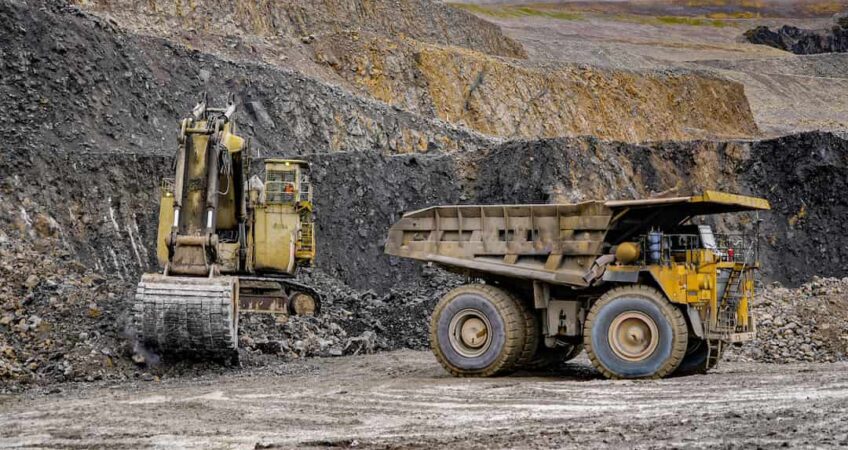
In mining, haulage refers to the process of transporting extracted materials—such as ore, coal, waste rock, or equipment—from the mining site to another location for processing, storage, or disposal. It plays a vital role in both surface and underground operations, and without an effective haulage system in place, production slows, costs rise, and safety risks increase.
The method used depends on several factors, including the type of mine, the volume of material, and the distance between extraction and delivery points. From high-capacity trucks in open-cut mines to conveyor systems and rail networks in large-scale operations, haulage is the link that keeps the mining process moving.
For mining companies, understanding how haulage works—and the challenges it presents—is key to managing productivity, maintaining site safety, and reducing delays.
What Does Haulage Involve in Mining?
Haulage is more than just moving rock. It includes the transport of raw materials, equipment, machinery, and waste between key points on a mining site. These include the pit or underground face, stockpiles, processing plants, workshops, and waste areas.
The goal is to keep material flowing smoothly so the operation runs without delays. Whether it’s hauling ore to be crushed or delivering replacement equipment to a remote site, haulage forms the backbone of mine site logistics.
Types of Haulage Systems in Mining
Mining operations use different haulage methods depending on site layout, terrain, and the nature of the materials being transported. Below are the most common systems used in the industry.
Truck Haulage
Truck haulage is one of the most widely used methods in surface mining. It involves the use of large off-road mining trucks designed to carry heavy loads across rough terrain.
These trucks are flexible, capable of handling large volumes, and easily redirected to meet changing site demands. They are especially effective when haul distances vary or site conditions change over time.
Related reading: Learn more about how these trucks are transported in How Are Mining Trucks Transported.
Conveyor Systems
Conveyors are used when materials need to be moved continuously over long distances. They are ideal for stable, high-volume routes and are often seen in large-scale operations where moving ore from the pit to the plant is ongoing.
Once installed, conveyor systems can reduce the need for truck haulage, lower emissions, and improve energy efficiency.
Rail Haulage
Rail systems are often used in operations with heavy material movement over long, predictable distances. Although less common today due to higher upfront costs, rail can be an efficient solution when transporting large volumes of ore or coal.
Rail is typically used in established mining regions or for connecting mines to remote ports or industrial hubs.
Underground Haulage
In underground mining, haulage is more complex due to space and access limitations. Common systems include:
-
Load-Haul-Dump (LHD) vehicles
-
Rail-based systems
-
Conveyor belts and skips
These methods are compact and designed for narrow tunnels. The chosen method often depends on the depth of the mine, the incline of the drifts, and the production scale.
Why Haulage is Critical to Mining Operations
Cost Management
Haulage can account for a significant portion of a mine’s operating costs—often up to 60% in surface mining. The cost of fuel, labour, equipment wear, and maintenance adds up quickly. Choosing the right haulage method and optimising routes can dramatically reduce these overheads.
When operations are spread across remote areas, efficient planning becomes even more important. Poor haulage decisions can lead to unnecessary delays, budget blowouts, and lost production.
Productivity and Efficiency
Mining relies on consistent material flow. If ore or waste isn’t moved on time, production stalls. Effective haulage systems help avoid these bottlenecks by keeping extraction, transport, and processing aligned.
Whether it’s scheduling truck cycles or integrating conveyor systems, smooth haulage contributes directly to higher daily output and better use of equipment.
Safety Considerations
Mining environments are high-risk. Poorly managed haulage can result in vehicle collisions, load instability, and unsafe interactions between machinery and workers. Investing in trained operators, appropriate equipment, and proper haul road design can reduce incidents significantly.
Haulage to and from remote mining sites also presents added risks. Reliable transport in these areas requires experience and attention to detail. For more on this, see our Mine & Remote Transport service offering.
Challenges in Mining Haulage
Haulage is rarely straightforward. Mining companies face a unique set of logistical obstacles:
-
Remote locations: Many mines operate in isolated regions with limited infrastructure.
-
Weather impacts: Flooding, dust storms, and extreme temperatures can disrupt routes.
-
Overdimensional loads: Moving large machinery or components requires permits, escorts, and detailed planning.
-
Terrain and access: Navigating steep gradients, unsealed roads, and tight clearances demands experience and reliable equipment.
These factors make haulage a strategic function—not just a support task. Partnering with the right provider can reduce risk, improve compliance, and keep projects on track.
Related reading: See our guide on Logistical Challenges in the Mining Industry for more insight.
Choosing the Right Haulage Partner
The success of mining haulage often comes down to who you trust to manage it. A capable logistics partner does more than move materials — they ensure safety, efficiency, and compliance from start to finish.
When selecting a haulage provider, look for:
-
Experience in mining and remote-area transport
-
Capability for overmass and overdimensional loads
-
Strong planning and compliance support
Outsourcing to a dedicated transport partner can also reduce overheads and improve reliability. Learn more in our blog on the Benefits of Hiring a Heavy Haulage Partner.
Final Thoughts
Haulage is more than a support role in mining — it’s a critical function that impacts safety, productivity, and profitability. Understanding how haulage works, what methods are available, and what challenges it presents gives you greater control over your mining operation.
If your project depends on consistent material flow, reliable equipment delivery, or remote-site logistics, a proven haulage provider can make all the difference.
